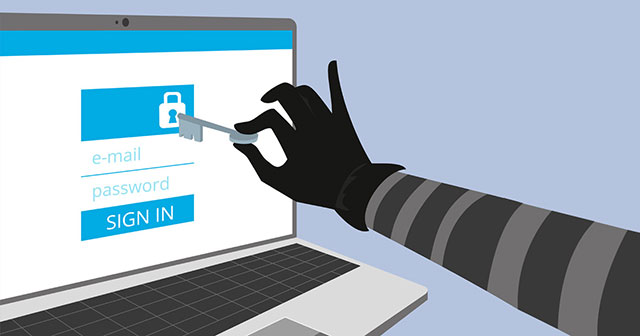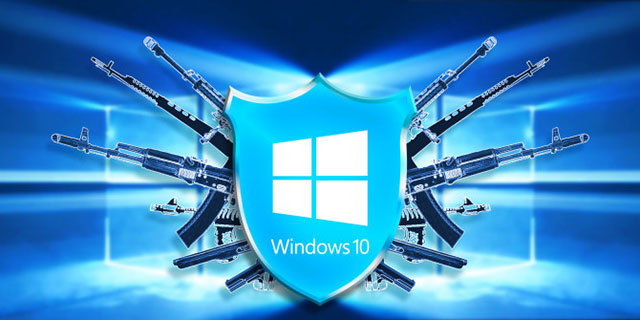10 important Windows Group Policy settings need to be done immediately
One of the most common ways to configure a Microsoft Windows machine is to use Group Policy. These are settings related to registration on the computer, configuration of security and behavior settings when operating the machine. Group Policy can be opened from Active Directory (from the client) or configured right on the computer (local). Windows 8.1 and Windows Server 2012 R2 machines have more than 3,700 settings for the operating system.
Here are 10 important Group Policy settings that you need to consider. Not only should you stop at these 10 settings because every reasonable setting will help reduce the risk. But these 10 options will decide almost all.
If set up correctly for these 10 names, you will create a safer Windows environment. All are in Computer Configuration / Windows Setting / Security Settings.
1. Change the Local Administrator account name
If bad guys don't know admin account names, they will take more time to hack. Rename the admin account that cannot be done automatically, but you must do it yourself.
2. Disable guest account
One of the worst things you do is turn on this account. It grants multiple access rights to Windows machines and does not need a password. Thankfully, there is an option to disable this feature by default,

Set up Group Policy properly to secure Windows machines
3. Disable LM and NTLM v1
LM (LAN Manager) and NTLM v1 authentication protocol are very vulnerable to attack. Please use NTLM v2 and Kerberos. By default, almost all Windows machines accept all 4 protocols. Unless you have an old machine (more than 10 years) and haven't patched it, it's rare to use the old protocol. May disable them by default.
4. Disable storing LM
LM password hashing is easy to convert to plain text. Don't let Windows save them on the drive, where hackers can use the tool to find out. It is disabled by default.
5. Minimum password length
Password length for normal users should be at least 12 characters - 15 characters or more with higher level accounts. Windows passwords are not very safe if there are less than 12 characters. To be the most secure in the Windows authentication world, it should be 15. So it almost closes every back door.
Unfortunately, setting up the old Group Policy only has a maximum of 14 characters. Use Fine-Grained Password Policies, although it's not easy to set up and configure on Windows Server 2008 R2 (and older), but with Windows Server 2012, it's easy.
6. Maximum life of the password
Passwords with 14 characters or less are not used for longer than 90 days. The default Windows maximum password duration is 42 days, so you can use this number or increase it to 90 days if you want. Some security experts say that using a password for up to a year is fine if it has 15 or more characters. However, remember that the longer the time limit, the higher the risk of someone stealing and using it to access another person's account. Better short-term use is still better.
7. Event Logs
Many victims of the attack have been able to detect them early if they turn on Event Logs and have a habit of checking them. Make sure you use the recommended settings in the Microsoft Security Compliance Manager tool and use Audit Subcategories.
8. Disable anonymous SID attendance
Security Identifiers are the numbers assigned to each user, group, and security object on Windows or Active Directory. In the first versions of Windows, unproven users can query these numbers to identify important users (such as administrators) and groups, hackers would love to exploit this. This rollout can be disabled by default.
9. Don't leave anonymous accounts in the group of people
This setting along with previous settings when configured incorrectly will allow an anonymous user to access the system further than allowed. Both settings can be turned on by default (disable anonymous access) since 2000.
10. Turn on user account control (User Account Control - UAC)
Since Windows Vista, UAC is the number 1 protection tool when browsing the web. Yet many people turn off because of old information about software compatibility issues. Most of these problems are gone, the rest can be solved with Microsoft's free incompatible detection utility. If you disable UAC, you will be in more danger on Windows NT than newer OSs. UAC is enabled by default.

New OS versions are set by default quite a lot
If you notice, you will see that 7 of 10 of these settings are correctly configured on Windows Vista, Windows Server 2008 and later. No need to waste time figuring out all 3,700 Group Policy settings, please configure it correctly.
You should read it
- Use Group Policy Filtering to create a NAP DHCP enforcement policy - Part 1
- Secure Endpoint with Group Policy
- Top 5 security settings in Group Policy of Windows Server 2008
- 4 tips to open Local Group Policy Editor on Windows 8 / 8.1
- Group Policy special security settings
- Use Group Policy Filtering to create a DHCP enforcement policy for NAP - Part 2
- Configure App-V with Group Policy Objects
- Install the printer using Group Policy Object
May be interested
- Use Group Policy Filtering to create a NAP DHCP enforcement policy - Part 1
 how to use group policy to control the implementation of dhcp network access policies, improves the level of performance so that dhcp can be enforced on nap clients.
how to use group policy to control the implementation of dhcp network access policies, improves the level of performance so that dhcp can be enforced on nap clients. - Install the printer using Group Policy Object
 in the following article, we will show you how to install the printer using group policy object. in essence, this process is not too complicated and difficult, but just follow the process. first, open the group policy control panel, edit the policy m & agra component directly
in the following article, we will show you how to install the printer using group policy object. in essence, this process is not too complicated and difficult, but just follow the process. first, open the group policy control panel, edit the policy m & agra component directly - How to apply Group Policy only to non-administrators in Windows 10
 if you want to apply a policy to a specific user, read the following article to learn how to do it.
if you want to apply a policy to a specific user, read the following article to learn how to do it. - 11 tips to open Local Group Policy Editor on Windows
 on local group policy editor, you can set up deletion of notification history, set up account lock to limit the number of login times, etc. in the article below, tipsmake.com.com will introduce to you a several ways to open local group policy editor on windows.
on local group policy editor, you can set up deletion of notification history, set up account lock to limit the number of login times, etc. in the article below, tipsmake.com.com will introduce to you a several ways to open local group policy editor on windows. - Use Group Policy Filtering to create a DHCP enforcement policy for NAP - Part 2
 how to use the nap policy wizard to automatically create network, health, and connection policies to control your network.
how to use the nap policy wizard to automatically create network, health, and connection policies to control your network. - Control Wifi access using Group Policy
 users can create a group policy setting that blocks workstations connected to any wi-fi network outside the specified network.
users can create a group policy setting that blocks workstations connected to any wi-fi network outside the specified network. - How to Edit Group Policy in Windows XP
 discussed herein are ways through which a pc user can be able to utilize the group policy snap-in to develop or edit the lists of applications that load automatically when you log into a pc running on windows xp. this option is utilized...
discussed herein are ways through which a pc user can be able to utilize the group policy snap-in to develop or edit the lists of applications that load automatically when you log into a pc running on windows xp. this option is utilized... - Remote workstation security in Windows Server 2008 R2
 in this article we will discuss some of the security mechanisms included in rds along with how to use group policy and configuration settings.
in this article we will discuss some of the security mechanisms included in rds along with how to use group policy and configuration settings. - Hide Control Panel on Windows 10 using Group Policy
 want to prevent others from changing settings on windows 10? this guide will help you disable control panel using group policy editor and registry editor, ensuring effective system security.
want to prevent others from changing settings on windows 10? this guide will help you disable control panel using group policy editor and registry editor, ensuring effective system security. - Mount Network Drive on Windows Client using Group Policy
 the job of mapping network drives is one of the most commonly done tasks of system administrators, this process was often done by scripting. in the following article, we will show you how to do this via group policy in windows ...
the job of mapping network drives is one of the most commonly done tasks of system administrators, this process was often done by scripting. in the following article, we will show you how to do this via group policy in windows ...










 How to customize DNS in Windows 10?
How to customize DNS in Windows 10? Instructions for changing Google DNS 8.8.8.8 8.8.4.4
Instructions for changing Google DNS 8.8.8.8 8.8.4.4 How to change DNS Freenom World on Windows
How to change DNS Freenom World on Windows Create QR codes on computers with QRCode Monkey
Create QR codes on computers with QRCode Monkey How to read QR codes on computers
How to read QR codes on computers Fix Windows 10 error, Windows 8 cannot use ASLR security feature
Fix Windows 10 error, Windows 8 cannot use ASLR security feature